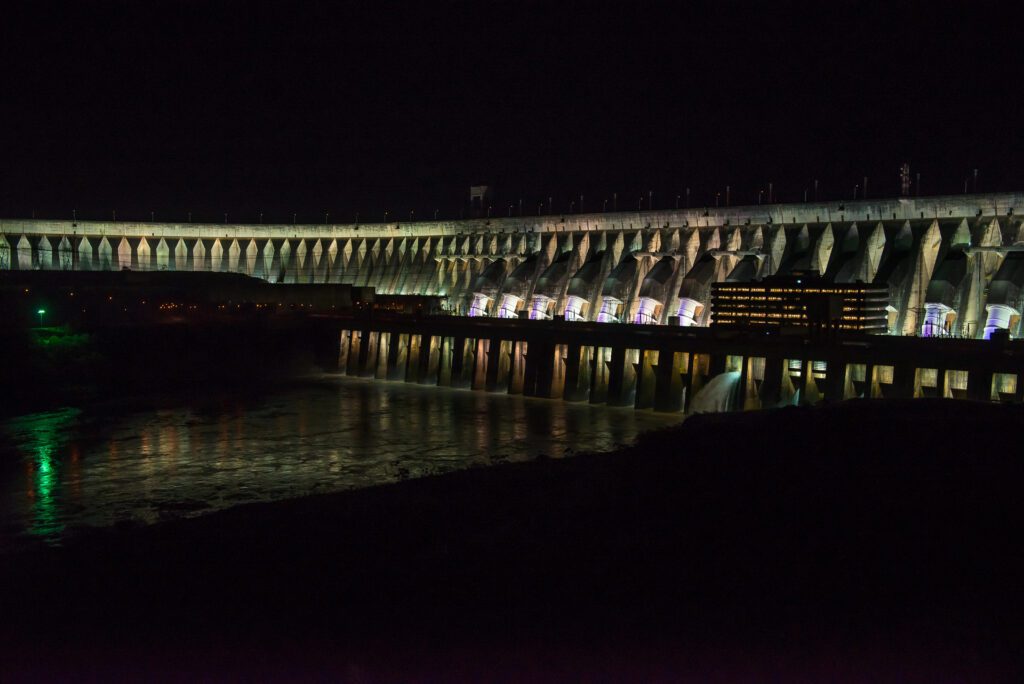The Amazon’s destruction is silently draining the country’s energy supply and hitting consumers where it hurts: their power bills.
By Gustavo Nascimento*
Electricity has become more expensive in Brazil — again. The red flag surcharge is back on monthly bills, and the usual explanations are repeated like a mantra: water scarcity, regulatory charges, and emergency fossil-fuel plants. But there is a deeper, structural, and entirely preventable cause that remains largely ignored: the deforestation of the Amazon.
Yes, deforestation is literally turning off Brazil’s lights.
While Congress debates who should pay the rising energy costs, deforestation continues as if the forest had no role in powering the turbines that drive the country. But it does — and a crucial one.
The Amazon rainforest functions as a vast atmospheric irrigation system. Through a phenomenon known as “flying rivers,” it generates humid air masses that carry water vapor from the northern biome to the central, southeastern, and southern regions of Brazil — areas that depend heavily on rainfall to replenish river basins and sustain hydroelectric generation.
When the forest is replaced by cattle pasture or soybean plantations, those air currents lose moisture. It rains less. Rivers shrink. And turbines slow or stop.
That’s the warning in two recent studies from the Climate Policy Initiative (CPI/PUC-Rio) and the Amazônia 2030 initiative: (Cutting Down the (Hydropower) Plants: How the Amazon Deforestationis Jeopardizing Electricity Generation in Brazil) and (Deforestation Cuts the Lights: Itaipu, Belo Monte, and the Cost of Forest Loss). Their findings are stark. Two of Brazil’s largest hydroelectric plants — Itaipu and Belo Monte, which together account for around 11% of the country’s energy capacity — are already losing 3,780 GWh of power annually due to forest loss. That’s enough to supply 1.5 million Brazilians, or nearly $225 million USD wasted every year.
In practical terms, cutting down Amazon trees is like shredding money.
Itaipu, located over 600 miles from the forest itself, loses an estimated 1,382 GWh per year because of deforestation — around $100 million in energy revenue. At Belo Monte, in the heart of the Amazon, the figure is even higher: 2,393 GWh lost annually, worth roughly $128 million.

The damage isn’t confined to the rainforest. Plants in the Paraná Basin — including Salto, Salto Verdinho, and São Domingos — have already experienced drops of up to 3% in generation capacity and 10% in annual profits due to declining rainfall.
The Teles Pires plant in the “arc of deforestation” — a hotspot of forest clearance in western Brazil — faces estimated losses of 2.5% to 10% of its output, enough to supply 330,000 people. The annual revenue hit: $22 million.
The underlying science is simple. Less forest means less rain. Less rain means less water flowing into hydroelectric reservoirs. And that means higher reliance on fossil-fuel alternatives — which are not only more expensive, but also dirtier and less efficient. The shift drives up greenhouse gas emissions, strains the national grid, and weakens Brazil’s long-standing energy advantage: a mostly clean and renewable power matrix.
This is a dangerous disconnect. As the world accelerates toward a clean energy future, Brazil — a country once lauded for its renewable energy leadership — is quietly sabotaging its own system. Every hectare of forest cleared erodes a strategic asset.
The irony is brutal: deforestation is still sold to the public as a driver of rural development, while in reality, it’s dismantling the infrastructure that supports Brazil’s economy. Forest protection is no longer just about biodiversity or environmental ethics. It’s an urgent economic imperative.
The CPI study estimates that forest loss in critical watersheds could cost the power sector up to $15,000 per square kilometer. That should be reason enough to align Brazil’s environmental and energy policies — including public and private investment in conservation and restoration, and active participation by the energy sector in forest protection.
Brazil’s power system is showing signs of fatigue. Drought, climate change, and unchecked deforestation are converging into a perfect storm. Contrary to what some believe, the energy crisis is not a hypothetical risk — it’s already underway. And we’re paying more for a dirtier, less stable power supply.
Protecting the Amazon means protecting household energy costs, industrial competitiveness, agribusiness productivity, and national energy security. It means ensuring that Brazil — and, by extension, the world — continues to be powered by water, not smoke.
The message is clear: deforest today, power down tomorrow. And in the end, the light that goes out is the one you pay for.
*Gustavo Nascimento is a journalist and project coordinator at O Mundo que Queremos, a Brazilian nonprofit focused on social and environmental justice.
Photo: Depositphotos
This article was originally published in Portuguese on the Um Só Planeta platform: https://umsoplaneta.globo.com/opiniao/colunas-e-blogs/o-mundo-que-queremos/post/2025/08/o-desmatamento-vai-cortar-a-sua-luz.ghtml.

